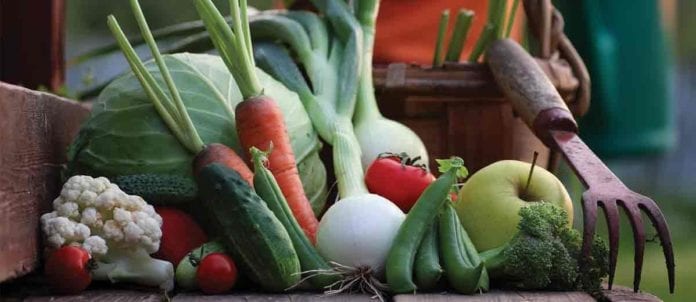Mealtimes have traditionally been a time for friends and families to sit around the table and share stories. But now, chefs and producers are using the food itself to spin yarns — telling tales about the local terroir and starting a dialogue around the importance of sourcing local ingredients.
In Ontario, fresh local products are in abundance — one only has to look as far as their own backyard — and the producers/suppliers are passionate about the story behind their food. For Kitchener, Ont.-based Flanagan Foodservice, supporting the local food economy is something that’s very natural. “It’s been a part of what [Flanagan] has always done, but for some reason we’ve kept it a secret,” says Peter Bozzer, director of Procurement. “Now we have a strategic marketing campaign [to get the word out] about the things we were already doing.”
He says an important component of the campaign is providing customers with a clear definition of what the company perceives as local. “The general mentality of ‘close to home’ is a good way of explaining [local food] but in terms of actually defining [local] — because we do have to be very clear with our customers — it would be a product of Ontario and how that is defined by the OMAFRA.”
OMAFRA (Ontario Ministry of Agriculture, Food and Rural Affairs) defines local food as being produced or harvested in Ontario and, subject to any limitations in the regulations, food and beverages made in Ontario if they include ingredients produced or harvested in Ontario.
THE STORY BEHIND THE INGREDIENTS
Speaking at the Greenbelt Fund Local Food Symposium in Toronto, Beth Hunter, program director at the Montreal-based J.W. McConnell Family Foundation, said when it comes to local ingredients, it’s not enough to just know the geography. “It can also be about telling the story around the history of that food. For example, when we talk about picking local strawberries, we can also talk about how that’s an important cultural tradition for many Indigenous peoples.”
Bozzer agrees. “It’s absolutely important for us to [tell the story] and equally, or more, important for our customers to tell the consumers,” he says, adding Flanagan works with its customers to highlight the benefits of not only using local ingredients, but promoting them on their menus. “Adding the word ‘Ontario’ adds value and people feel good about it.” Connecting customers with farmers is another important part of telling the local story. “Nowadays, we’re able to introduce the customer to the farmer on an online platform,” says Bozzer. For example, by publishing producer bios, the customers become familiar with the source. “Sometimes they end up connecting on the phone and reaching out to each other to take the next step.”
While the telling of those stories, Hunter says, happens most easily when its direct farmer to consumer, “it also happens in ways such as Loblaw’s peaches [which feature] the producer’s picture on them and food hubs working to de-commoditize food. Consumers are more and more savvy and [can tell if] it’s a legitimate story.”
This is especially the case, says Bozzer, for the millennial cohort, which is known for demanding transparency and accountability when it comes to their food. “They’re the demographic that want the story behind the food. They want an experience.” They’re also quickly taking over from the Baby Boomers in terms of dollars spent at restaurants, he adds. “[Local] will not be something unique to them — this will be the cost of entry for restaurants.”
But will they pay more for it? According to Bozzer, they may not have to. “For the things we do extremely well in Ontario when they’re in season, generally [it doesn’t cost more]. On the other hand, there are people growing strawberries in greenhouses in the middle of winter and yes, those will cost more than imported strawberries from California. But, if you do it properly, it doesn’t have to cost you more and in fact, I would argue that the value is far greater.”


















